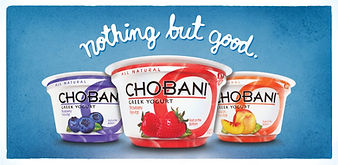
CHOBANI GREEK YOGURT

HOW MATTERS

5 Forces on Dairy Market in China
Chobani operates within the dairy industry. Research states that the consumption of yogurt in China has been increasing 30% annually (Green Agriculture Sci-Tech Development Co., 2013). From 2012 to 2013, the consumption of yogurt increased 110% and is expected to continuously rise during the coming years (Canadean, 2014). Moreover Euromonitor, an international market research organization, forecasts that in 2017, China will surpass the United States consumption in the dairy market, and will double its size to $70 billion dollars (Burkitt, 2013).
Bargaining Power of Suppliers
The main ingredient in yogurt is milk, and according to a report of the United States Department of Agriculture, China’s fluid milk consumption is expected to rise 7% in 2014 as a result of population growth, urbanization, and increasing income. However, China is currently not able to enlarge their domestic milk production. It could be said that the bargaining power of milk suppliers in China is high due to the inability to meet their own local demand (Raghunathan, 2014).
Threat of New Entrants
By 2016, yogurt drinks is predicted to become the third most consumed dairy drink in China. This increase in yogurt drinks will exceed the consumption of flavored milk, as well as grain, nut, rice and seed milk alternative drinks in China (Canadean, 2014). China is also experiencing a growth of, or more publicized, health safety issues. A recent and large issue, in 2013, concerned a recall of milk powder products that contained bacteria which can cause botulism (Lina, 2014). Arising safety issues in the Chinese dairy market led to Chinese customers tending to trust more in international, imported, brands (Speirs, 2014).
As a result, the Chinese government is currently implementing new policies in order to strengthen consumers’ confidence, improve transparency, and gain control over the dairy industry. To reach these goals, the government is giving large incentives for big companies to acquire smaller firms. Even though the Chinese dairy market is becoming a very attractive market for expansion due to its growing demand and the customers’ preferences for well-known international brands, China’s entry barriers are still high. The government is raising the standards and smaller firms find it more difficult to explore the Chinese market. Moreover, China states that international dairy companies who want to play a role in the new imposed industry landscape will have to collaborate and help to improve the dairy industry (Speirs, 2014). Because of the imposed government measures, a form of entry barriers, the threat of new entrants is medium.
Bargaining Power of Buyers
During the past decade the average Chinese citizen’s disposable income has increased, which has led to a growing demand in the food and beverage market in China (Trading Economics). Chinese consumers are becoming more aware of the benefits of yogurt and they are demanding healthier and more nutritious dairy products. Moreover, Chinese customers are characterized as not being loyal towards brands. Although there is no big variety of yogurt products and brands available in the Chinese supermarkets, the bargaining power of consumers is high because of how often they switch brands and their open-mindedness towards new products (The Economist, 2014).
Rivalry Among Existing Competitors
Dairy giants such as Yili, Mengniu, Bright Dairy, Weiquan and Dannon, are shaping the yogurt market in China. The import of yogurt has been experiencing an increase during recent years due to the rising demand in China. Between 2003 and 2012, the import of yogurt in China grew from 500 million tons of yogurt to 8000 million tons of yoghurt (Green Agriculture Sci-Tech Development Co, 2013). Mengniu has the largest market share with 17%, and Dannon held only 1.6% in 2013. The Chinese dairy market is experiencing arising alliances between competitors. For example, in 2013, Dannon and Mengniu established a joint venture (Canadean, 2014).
The rivalry among competitors is high, but as China recently proposed to appoint six “giants” to establish a new structure of the dairy sector that consists of fewer competitors so that they can regulate the quality of the products, the rivalry is becoming less intense and state controlled instead (Speirs, 2014).
Threat of Substitute Products
Milk and flavored milk are possible substitutes for yogurt consumption. As shown in the graph below, regular milk currently possesses the biggest market share within the Chinese dairy market. However yogurt based products have a better taste, higher quality and are conducive to digestion (PRNewswire, 2014). Due to these facts, the threat of substitutes is relatively low.

Source: Euromonitor International